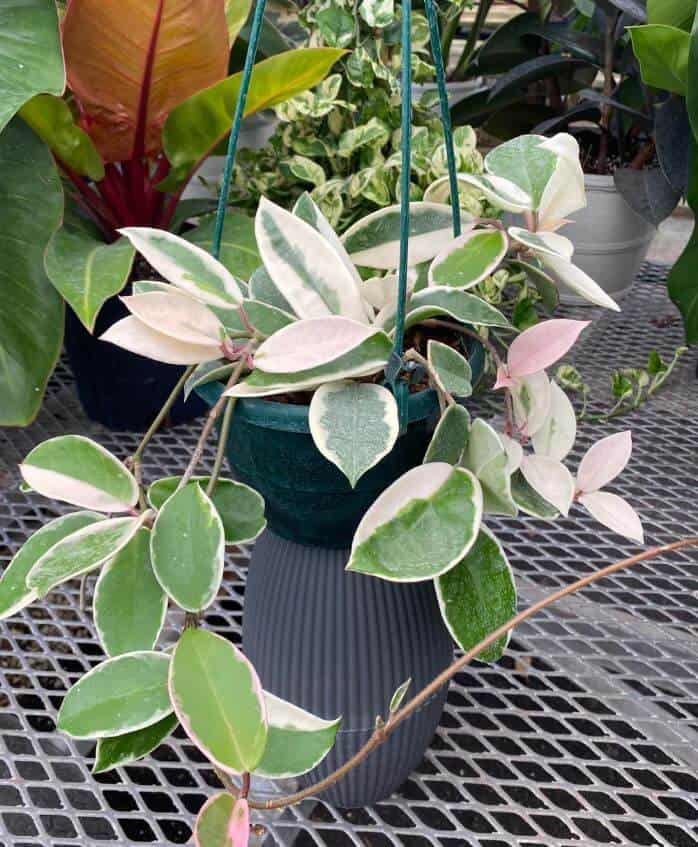Last Updated on April 28, 2023 by a Friendly Gardener
Botanically named the Hoya carnosa ‘Variegata’, the delightful, variegated wax plant is especially popular for its foliage. Varieties of this tropical beauty may feature a blend of white, green, pink, or cream and are often showcased in hanging baskets. The Variegated Wax plant can be cultivated outdoors or will make a nice addition to your indoor garden.
A somewhat woody succulent vining plant, the Hoya carnosa ‘Variegata’ is popularly referred to as the honey plant, the wax plant, the porcelain flower plant, or a wax vine. Some varieties of this species will feature variegated foliage. Variegation indicates that leaves may feature several colors often in streaks or irregular patches. Just as the Hoya carnosa plant does not boast variegations, the variegated version will produce fragrant flower clusters that can be described as umbel-like.
The Variegated Wax plant finds its native habitats in Southern India, Southeast Asia, and Australia. The Scottish botanist Robert Brown went to Australia in 1801 to research unknown plants. His studies collected more than 3,000 plants and more than half of the species collected he named. Among these was the Hoya carnosa which he named to honor his colleague and friend Thomas Hoy.
Variegated Wax Plant Care
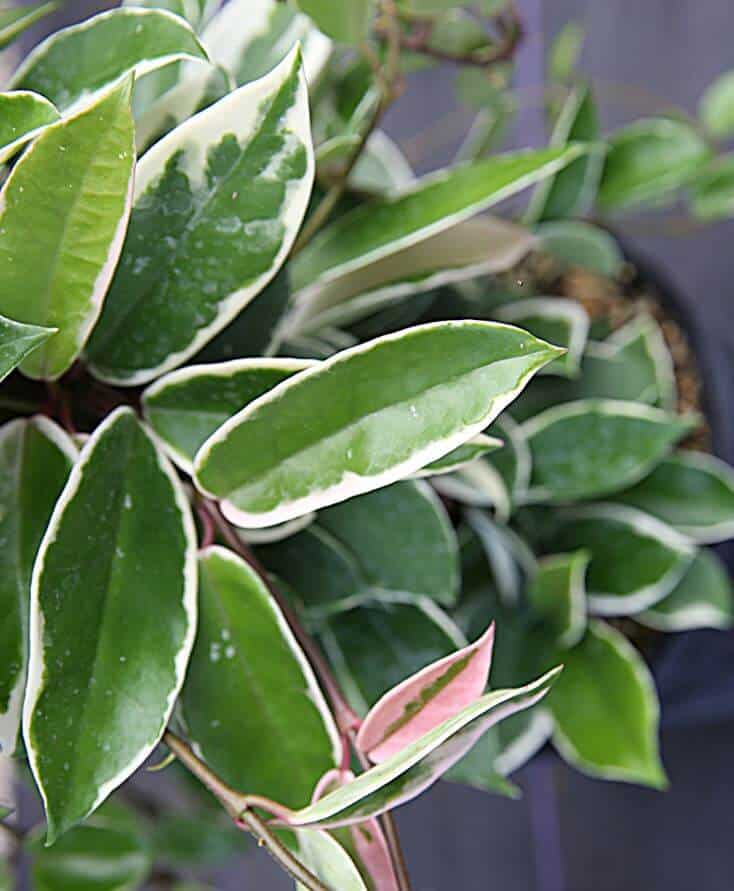
Soil
In their native environments, these plants are epiphytic meaning they attach themselves to rocks and trees or similar for support. Variegated wax plants have very shallow roots, so they do not need deep containers or organically rich soil beds to perform well. African violet soil mixes are indicated for the wax plant, or you can opt to add pumice or perlite to potting soil to guarantee good drainage which is essential to Hoya carnosa ‘Variegata’ health. Soilless potting mix is another alternative.
These plants can be repotted every two to three years.
Light
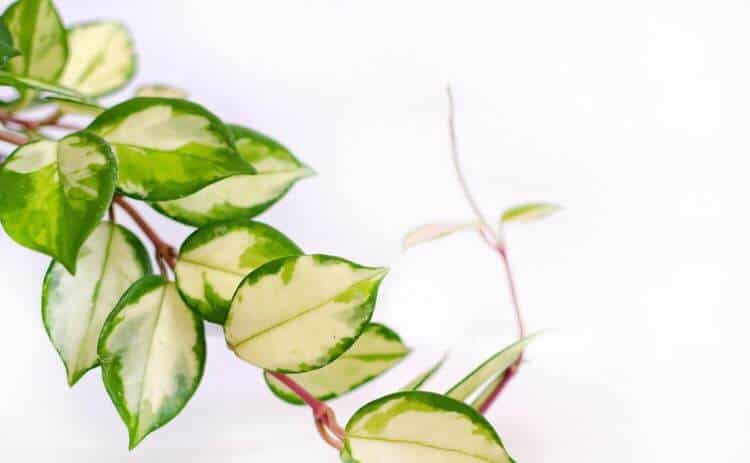
The Variegated Wax plant needs lots of bright but strictly indirect light. Whether grown inside or cultivated outdoors, lighting requirements are the same. Direct sunlight exposure should be limited to a couple of hours when the sun is not at its strongest such as early morning and late afternoon. Direct light should be very limited as the foliage will suffer scorching.
Water
A good rule to follow with a variegated wax plant is to allow the soil bed to dry out somewhat before watering. If the soil feels dry to approximately two inches deep, it’s time to water. Soak your plant and allow all excess water to drain from drainage holes. During the growing season plan on watering once or twice weekly, whereas in cooler seasons, watering should be reduced. These plants are susceptible to root rot, so overwatering will place your plant at risk.
Humidity
As tropical plants, variegated wax plants prefer a minimum level of indoor humidity of about 40%. If you live in an arid climate or have dry indoor air due to heating and air conditioning, consider using a space humidifier or a water pebble tray beneath your plant to raise area humidity. Grouping several plants will also aid in creating a microclimate with higher humidity.
Temperature
When cultivated as indoor houseplants, the Hoya carnosa variegated prefers environmental temperatures that measure approximately 70° to 75°F. They will not survive temperatures that follow below 60°F during the nighttime. When they enter their rest period in winter they can survive temps as low as 40°F.
Feeding

While not necessary, your variegated wax plant will enjoy a boost with a bit of fertilizer. Use a liquid-balanced fertilizer for houseplants monthly during spring and summer when your plant is actively growing. Be sure to dilute your fertilizer before application to prevent root burn. Do not feed in the winter.
Pruning
Dead or damaged vines should be removed. Pruning can also aid in maintaining your plant’s shape and appearance.
Variegated Hoya Plant Propagation
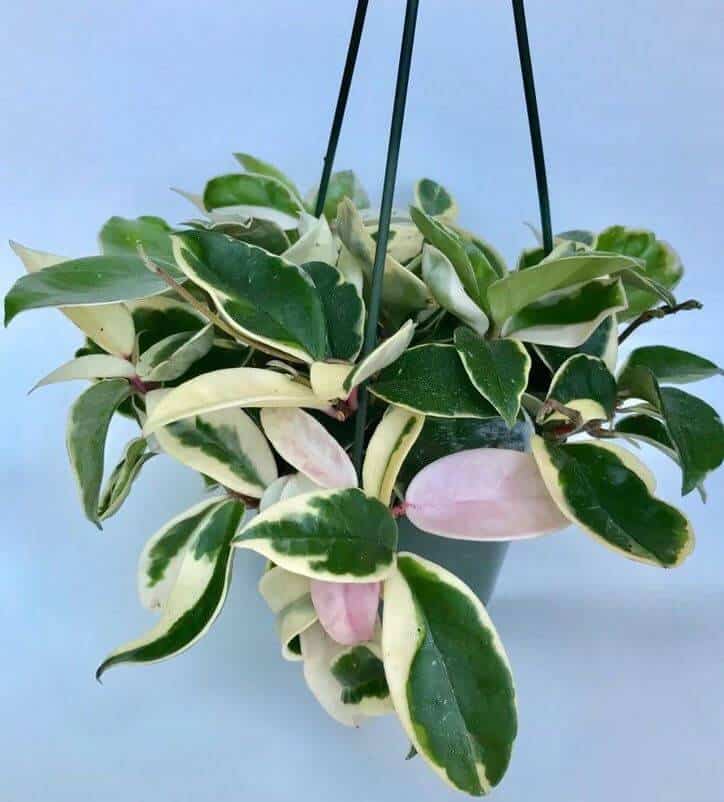
The variegated Hoya plant can be successfully propagated using stem cuttings. If you decide to propagate your plant, do so in the spring or summer during the growing season. These plants can be propagated in water or soil.
To propagate in soil, snip off a stem cutting of approximately six inches in length. Remove foliage from the bottom half of the cutting. A minimum of two to three leaves should remain on the cutting. Dip the cut end of the stem in the rooting hormone to increase the chances of successful propagation. Place the cut end into the growing medium and within a month, new roots should develop.
To propagate a variegated hoya plant in water, place a stem cutting with the lower foliage removed and place it in a glass jar or vase. Foliage should not sit below the water line. Place the cutting in a brightly lit spot. Change the water every four days to a week, especially if the water begins to appear murky. Within a month, you should be able to see the new roots developing. When roots have developed an inch or so, your cutting can be transplanted into soil.
Hoya Carnosa Variegated Problems
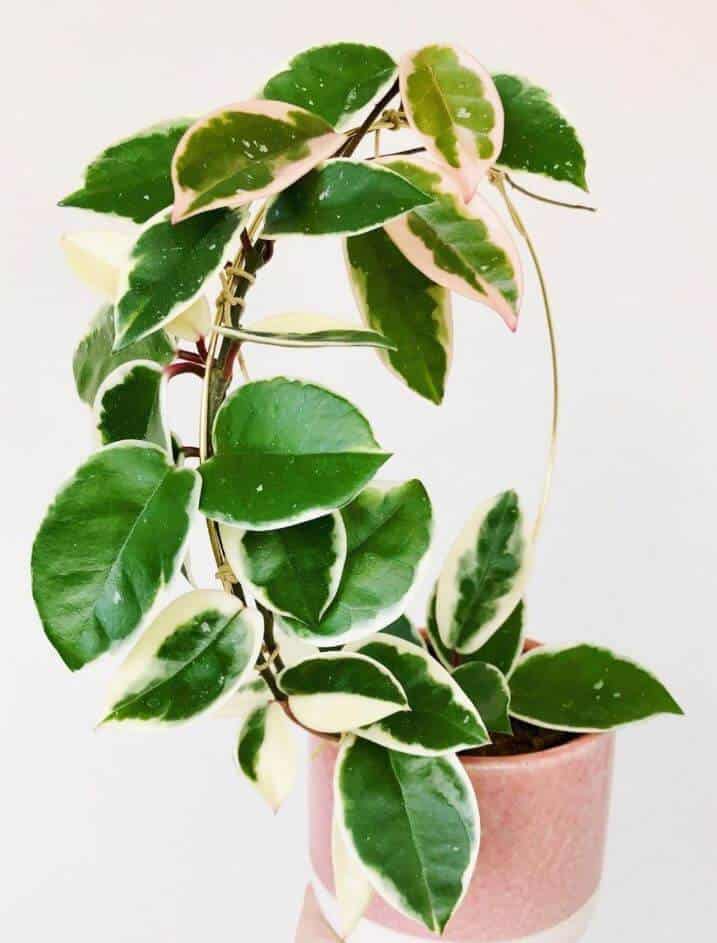
The principal problems for these plants may include leaf drop, wilting, browning foliage, or the absence of flowering. However, like most houseplants, the variegated wax plant is susceptible to some diseases and at risk for pest infestations.
Hoya carnosa variegated are susceptible to fungal infections. There is a risk that your plant can develop botrytis blight which then develops into root rot. Symptoms may manifest the infection by dark mushy lesions on stems, wilting, and gray or darkly colored roots. Infected parts should be removed and disposed of. The remaining plant should be treated with a fungicide. Neem oil is a natural fungicide that will not harm you or any pets you may have.
Another fungal infection to watch for is sooty mold. It may not be fatal but can be troublesome as it generally is caused by pest infestations of sap-sucking insects. Pest infestations can be eliminated with neem oil or by applying insecticidal soap. Pests that typically attack these houseplants include scale, mealybugs, aphids, and spider mites. Examine your plant for webbing under foliage, brown waxy deposits (scale), or white cotton-like deposits (mealybugs). Aphids will generally be found on and near blooms. Pest infestation requires immediate intervention, as it can spread quickly to other houseplants in the vicinity as well as destabilize your Variegated Wax plant.
Variegated Wax Plant Toxicity
Wax plants are not known to be toxic to humans or pets.

